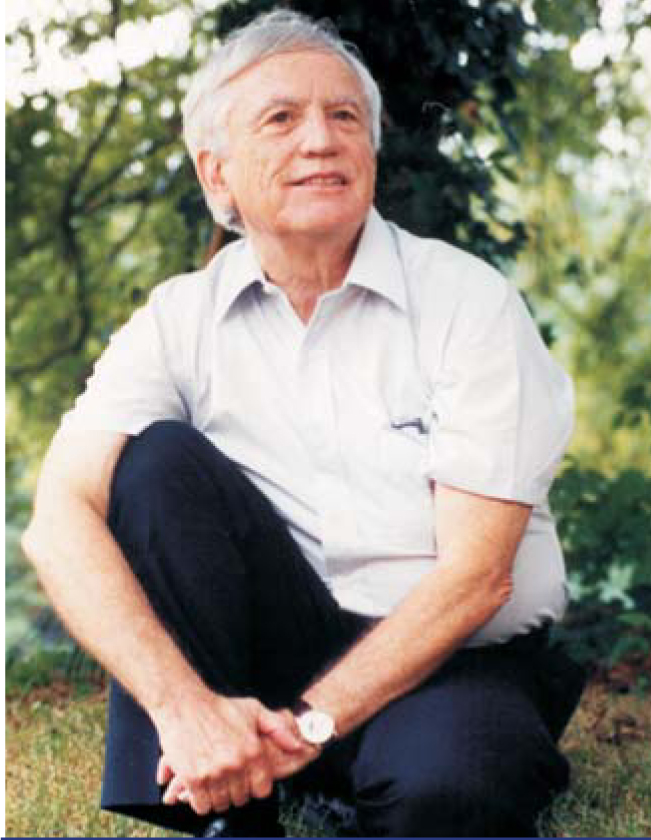George West Wetherill
DOI: 10.1063/1.2387100
George West Wetherill died 19 July 2006 of heart failure in his home in Washington, DC. Early in his career, George helped establish the field of radiometric geochronology, and later he became a leader in the theoretical understanding of planet formation. For those achievements, he received the National Medal of Science in 1997 and the top awards from various professional organizations, including the Meteoritical Society’s Leonard Medal in 1981, the Geological Society of America’s 1984 G. K. Gilbert Award, the American Geophysical Union’s Harry H. Hess Medal in 1991, and the American Astronomical Society’s 2003 Henry Norris Russell Lectureship.
Born in Philadelphia on 12 August 1925 during the peak of the Perseid meteor shower, George was fascinated by the natural world from early childhood; he joined the American Meteor Society in his teens. However, he found that his interest in science led to conflicts with the religious beliefs of some of those around him. Many of his acquaintances believed that it was inappropriate to apply the scientific method to questions regarding our origins. In a 1998 essay in the Annual Review of Earth and Planetary Sciences, he stated, “I am sure my interest in these questions was stimulated at an early age by the knowledge that many people felt deeply about these things, rather than dismissing them as dry and boring scientific details of no practical value.”
George enlisted in the US Navy during World War II and worked at the Naval Research Laboratory in Washington, DC. In 1946 he used the GI Bill to enroll in the University of Chicago, where a broad spectrum of basic physics was being applied to the study of the natural world. Although his training was in physics, George’s experience at Chicago included healthy doses of astronomy, chemistry, and geology. He published a paper in Physical Review in 1954 on naturally occurring isotopic variations caused by secondary nuclear reactions instigated by the alpha decay of uranium and thorium; those processes are now referred to as Wetherill reactions.
After graduating from Chicago, George was attracted to the Department of Terrestrial Magnetism (DTM) of the Carnegie Institution of Washington, where a group was being assembled for the development of radiometric clocks to determine accurate ages for rocks. Intrigued that radiometric dating occasionally provided incorrect results, George first remeasured many important decay constants, then explored the effects of element diffusion in minerals. The latter work led him to create the concordia diagram, which simultaneously considers the decay of 235U to 207 Pb and 238U to 206 Pb. The diagram not only allows improved precision in age determination, but it provides an internal check on whether the uranium–lead system has been disturbed by meta-morphism. The concordia diagram remains the most common approach for translating lead isotopic measurements into accurate ages for planetary and solar-system events.
In 1960 George became a professor of geophysics and geology at UCLA. His interest in the origin of meteorites was rekindled in 1964 when he attended a seminar by James Arnold on a new Monte Carlo technique for studying the evolution of meteorite orbits. With a copy of Arnold’s program, George began a second career investigating the dynamics of small bodies in our inner solar system.
After returning to the Carnegie Institution’s DTM as director in 1975, George expanded the focus of his research on the origin of meteorites to the formation of planets. He believed, as he was often heard to remark, that “there are too many good questions in science to waste one’s time doing something that would soon be done elsewhere.” His pioneering work showed how the huge number of rocky building blocks in a typical protoplanetary disk will naturally assemble into a set of planets such as those seen in our inner solar system. He also demonstrated that the same process was thwarted in the asteroid belt by the dynamical influence of Jupiter and Saturn. Along the way George found time to consider the origin of the Moon, the source of the late heavy bombardment of about four billion years ago, and the possible nature of extrasolar planets.
George Wetherill was a scientist of the highest caliber, whose contributions fundamentally changed our understanding of the history of the solar system. He also was an exemplary citizen, serving in many leadership roles—director, editor, society president, member of the National Academy of Sciences—while maintaining his devotion to his family and his appreciation of his ability to advance human understanding. He was a role model for us all in what he perceived as the ultimate responsibility of scientists. As he wrote in his 1998 article, “Fundamental science bears the burden of distilling the vast confusion of theory and empirical data into a form that makes it possible to pass it in usable form to the future, enabling gifted children to develop into scientific leaders while they are still young.”

George West Wetherill
DEPARTMENT OF TERRESTRIAL MAGNETISM ARCHIVE

More about the Authors
Richard W. Carlson. Carnegie Institution of Washington, Washington, DC, US .
John E. Chambers. Carnegie Institution of Washington, Washington, DC, US .
Sean C. Solomon. Carnegie Institution of Washington, Washington, DC, US .




